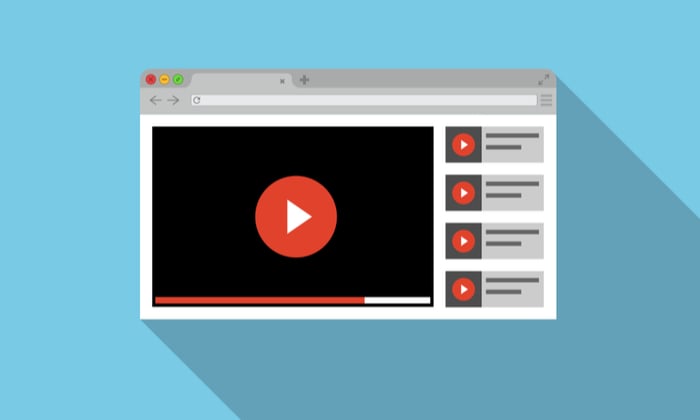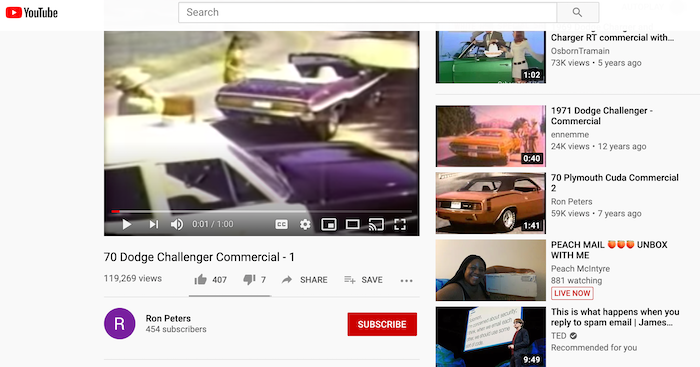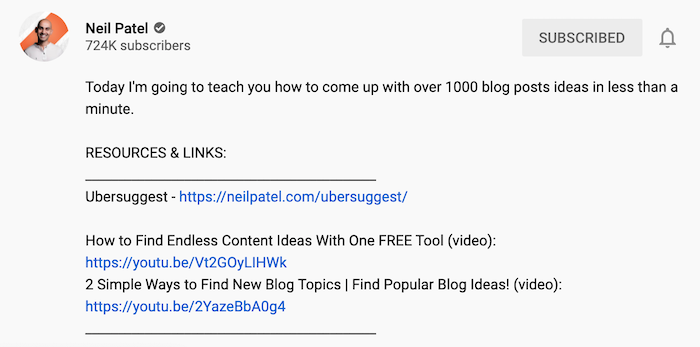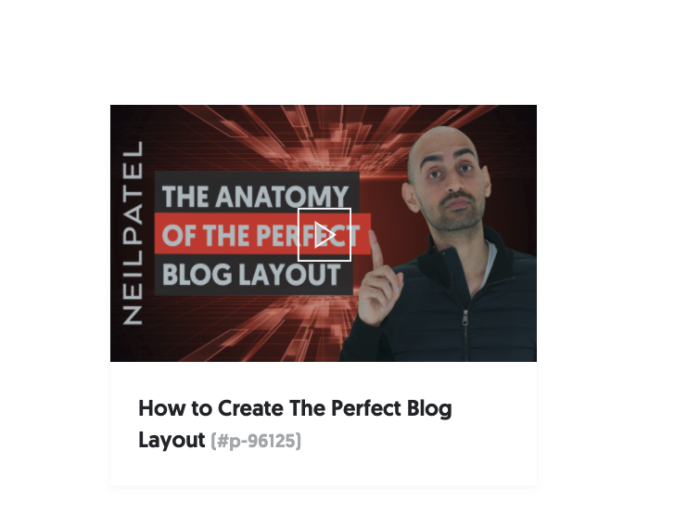
As the most-viewed site globally, YouTube is a must-visit destination for marketers and content creators looking to increase audience reach.
While it is possible to optimize YouTube SEO to score top results, without an understanding of the YouTube algorithm, SEO alone won’t manifest videos on a potential viewer’s suggested video list.
YouTube’s product chief underlined the reality of the impact of suggested-to-watch videos in an interview, noting 70% of a user’s time spent on the platform was dictated by the company’s suggested video algorithm.
70%. That number is huge.
To truly execute a successful YouTube marketing strategy, improve organic reach, and take advantage of that massive percentage, you need in-depth familiarity with the unique YouTube algorithm. Here are nine ways to increase your organic reach on YouTube.
The YouTube Algorithm’s Evolution
What began as a venture capital-funded technology startup in 2006 is now our go-to spot for all things video.
Although YouTube itself has undergone significant changes over the past fifteen years, its algorithm has, by far, been its most dynamic feature.
Before 2012, YouTube charted video success by the number of views alone, regardless of the length of viewing. This singular YouTube algorithm led to a profusion of clickbait videos that relied upon misrepresentative headlines and thumbnails to earn views, with most audience members jumping ship immediately.
Later the same year, YouTube began measuring success through view duration, a metric that rewarded longer-viewed videos with increased search promotion.
Today, we still see the roots of the platform’s infancy in the current YouTube algorithm, which draws heavily on view duration as a component of a video’s ranking.
How Does the YouTube Algorithm Work?
While YouTube’s stated mission is to give everyone a voice and a window to explore the world, one of YouTube’s lower-ranking goals is to engage viewers for extended amounts of time, maximizing the number of advertisement interactions.
Why does this secondary goal matter? Because YouTube suggests videos that satisfy this goal of increased exposure to advertiser content.
YouTube uses an algorithm based on three main qualifiers: relevance, engagement, and quality.
To benchmark relevance, YouTube explores the pairing of title, description, tags, and content with an individualized search query.
Engagement aggregates the number of responses from users, including watch time, engagement, and frequency.
Quality rating is determined by a channel’s ability to demonstrate trustable authority.
In addition to these three qualifiers, YouTube’s algorithm also draws on a user’s historical views and a video-specific assigned score, one that weighs both novelty and frequency of channel uploads, among other attributes.
This combination of statistics allows YouTube to recommend videos that speak directly to a viewer’s interests, continuing a narratively static viewing material chain.
These videos will appear in six different locations on the YouTube platform:
- Search results
- Recommended Streams (as shown in the screenshot on the right side in the below screenshot)
- Notifications
- Channel Subscriptions
- Trending Streams
- YouTube Home Page

Much like any search algorithm, YouTube’s ranking system is in constant flux, evolving and adapting in an ongoing attempt to better define and satisfy user engagement.
How do I Improve my Organic Reach on YouTube?
Armed with a concrete understanding of how the YouTube algorithm works, it’s time to break down how you can harness your newfound knowledge to increase your organic reach.
1. Keywords and Metadata
YouTube made it explicitly clear in their algorithm explanation that content-relevant keywords, descriptions, captions, and tags all matter when you’re optimizing videos for search. Make sure you do your keyword researching using a tool like Ubersuggest to make sure you’re mentioning terms users are looking for.
By writing compelling, keyword-rich titles and descriptions, you increase your chances of attracting audience members’ attention and increasing your video’s search visibility.
Check out this post if you need to brush up on SEO basics.
2. Optimized Description
The quote “you never get a second chance to make a first impression” is true of YouTube just as much as life.
Ensure audience engagement by crafting attention-getting copy that not only attracts your potential audience but also harnesses your keywords’ power.

YouTube slants toward the verbose, advocating long descriptions, so don’t be afraid to go the extra wordy mile with them.
Although your prospective viewer will only interact with the first few lines of the description unless they select the “show more” option, those few short lines are valuable real estate when it comes to attracting your audience.
3. Video Transcription
Closed captions not only help those with accessibility needs, but allows users to watch videos in silence.
To make the most of closed captions, upload self-created subtitles. By uploading these yourself, you ensure that, when these captions are indexed for search, they are more accurate than automatically-generated ones, in many cases.
4. Whole-Video Views
Because YouTube ranks videos by engagement, longer watch times mean more opportunities to earn the coveted suggested video inclusion.
If you’re struggling with viewer attrition rates, you’re going to want to tighten focus on your videos’ first few seconds and ensure you:
- match the description with the first few seconds of video content, and
- snag a viewer with an impossible-to-ignore hook.
Don’t forget to study your audience retention graphs and pay attention to what those metrics are telling you.
These quick fixes help you further engage your audience, extending watch time, and earning your video a higher score via the YouTube algorithm.
5. Conversational Conclusions
Rather than simply ending your video, use various tactics to influence your audience’s next view.
By directing viewers to another video on your channel, you increase interaction and likelihood that they’ll return to interact with future content, both of which satisfy the YouTube algorithm’s engagement portion.
To direct your audience, use watermarks, end screens, and cards, all of which can be clicked and linked to your next video, ensuring continued viewing of your channel and content.
6. Subscriptions
When viewers subscribe to your channel, you automatically increase your organic reach. To increase your number of subscribers, consistently create great content, videos viewers are dying to see.
While consistently creating great content may be easier said than done, it’s essential to building your channel. Create a channel trailer, reach out to influencers, and engage with all comments left on your videos.
If you’re looking for additional strategies to increase your subscribers, check out our YouTube Marketing Guide.
7. Serial Viewers
By crafting videos that continue a conversation, viewers are helpless to resist watching the next in the series.
To keep viewers on your channel, you can create playlists of videos with similar content: these are collections that will attract and sustain viewership.
8. Cross-Promote Content
Social channels are free advertising for your YouTube channel. Promote your videos on all your social accounts, website, and in your email marketing—anywhere you have an audience.

You can also publish a blog post with the video and a summary or transcription.
9. Actionable Analytics
These numbers don’t just exist to make you feel good; they tell you what’s working well and when, and to identify who is watching what and when.
Conversely, these numbers also tell you what isn’t working, which is inarguably the more influential insight. By identifying what isn’t working, you can try new strategies and content, attempting to delight your audience and improve your reach through different approaches.
By digging deep into YouTube analytics, you can unearth realities about your videos and your audience, allowing you to tailor your creation process to suit the needs of the audience you’re trying to reach.
Conclusion
With over one billion hours of video watched per day on YouTube, it’s undeniable content creators and marketers need to take advantage of the platform to curate and grow their audiences.
By understanding how YouTube suggests videos, content creators and marketers can make their videos work harder and use its nuances to your benefit.
How you changed how you upload videos to satisfy the YouTube algorithm?
The post 9 Ways to Improve Organic Reach and Beat the YouTube Algorithm appeared first on Neil Patel.
from Blog – Neil Patel https://ift.tt/3lCKYPN
from WordPress https://ift.tt/2GflF65

No comments:
Post a Comment